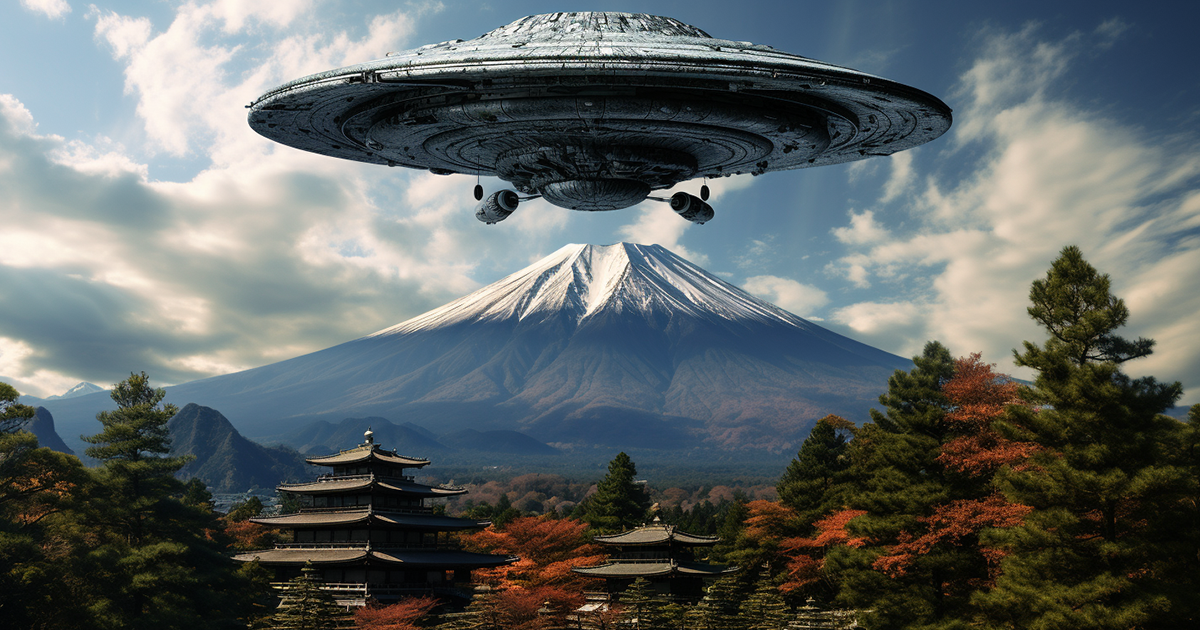Japan evokes images of a vibrant culture, breathtaking landscapes, and a rich history. Yet, hidden within its borders, lies a mysterious allure that has captivated both locals and foreigners for generations – a profound connection with the sky. While Japan embodies a fusion of tradition and spirituality, recent events have shed light on the country’s ancient link to celestial entities and the intriguing possibility of encountering extraterrestrial life forms.
During the early 2010s, Japan faced unprecedented natural calamities when a catastrophic magnitude 9.0 earthquake struck off the coast of the Oshika Peninsula on March 11, 2011. The aftermath unleashed massive tsunamis and a nuclear crisis at the Fukushima Daiichi power plant.
Amidst the chaos, witnesses reported sightings of mysterious objects in the sky before and after the disaster. These UFO encounters raised thought-provoking queries – were aliens present during those crucial moments? Could they have intervened to avert a more catastrophic outcome?
This was not the first instance where UFOs were linked to nuclear emergencies. Similar accounts emerged during the Chernobyl disaster in Ukraine years prior. Eyewitnesses described UFOs hovering near the plant, emitting light beams that seemed to influence the reactors, potentially mitigating a more severe catastrophe. Could these unidentified flying objects serve as protectors of our planet instead of mere spectators?
Many proponents of ancient astronaut theories argue that these encounters are not isolated but part of a larger extraterrestrial agenda unfolding on Earth for millennia. They propose that our history is being guided by a higher intelligence with extraterrestrial origins. What intentions might drive these interventions?

While some nations have been proactive in investigating UFO phenomena, Japan, known for its secrecy, took a surprising turn in 2020. The Japanese government, previously tight-lipped about UFOs, altered its stance by directing the Self-Defense Forces to document encounters with unexplained aerial occurrences.
This shift followed a meeting between Japanese Defense Minister Taro Kono and US Defense Secretary Mark Esper. The collaboration and dialogue on UFOs between these allied countries raise intriguing speculations about activities in Japan’s airspace.
Japan’s inclination to explore the UFO enigma may intersect with its rich cultural narrative. Ancient astronaut proponents suggest that traces of extraterrestrial communication are embedded within Japan’s fundamental faith, Shintoism. Shintoism venerates celestial beings called Kami, believed to reside in various elements of nature, encompassing humans, animals, and objects.
It is theorized that these Kami descended from their celestial realm to engage with the earthly realm. Could the Kami of Shintoism be ancient extraterrestrial entities shaping Japan’s fate?
Japan boasts a myriad of shrines, over 81,000 in number, dedicated to these Kami deities across its expanse. These shrines are viewed as terrestrial abodes where celestial beings dwell when they visit our world. By visiting these shrines, the Japanese populace communicates with extraterrestrial beings, requesting their protection and blessings.
As global powers increasingly probe civilian and military-reported UFO sightings, Japan’s recognition of the phenomenon contributes to international collaboration. While numerous questions persist unanswered, the profound connection between Japan and the skies hints at the possibility of extraterrestrial encounters that continue to fuel our collective imagination.
In a world brimming with mysteries, Japan’s mystical affinity with the celestial realm remains an intriguing subject of exploration and discovery. As we delve further into the unknown that lies ahead, the Land of the Rising Sun may unlock a plethora of secrets in the days to come.
